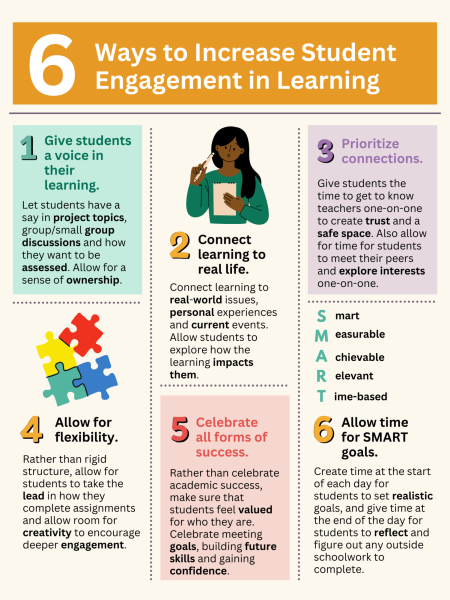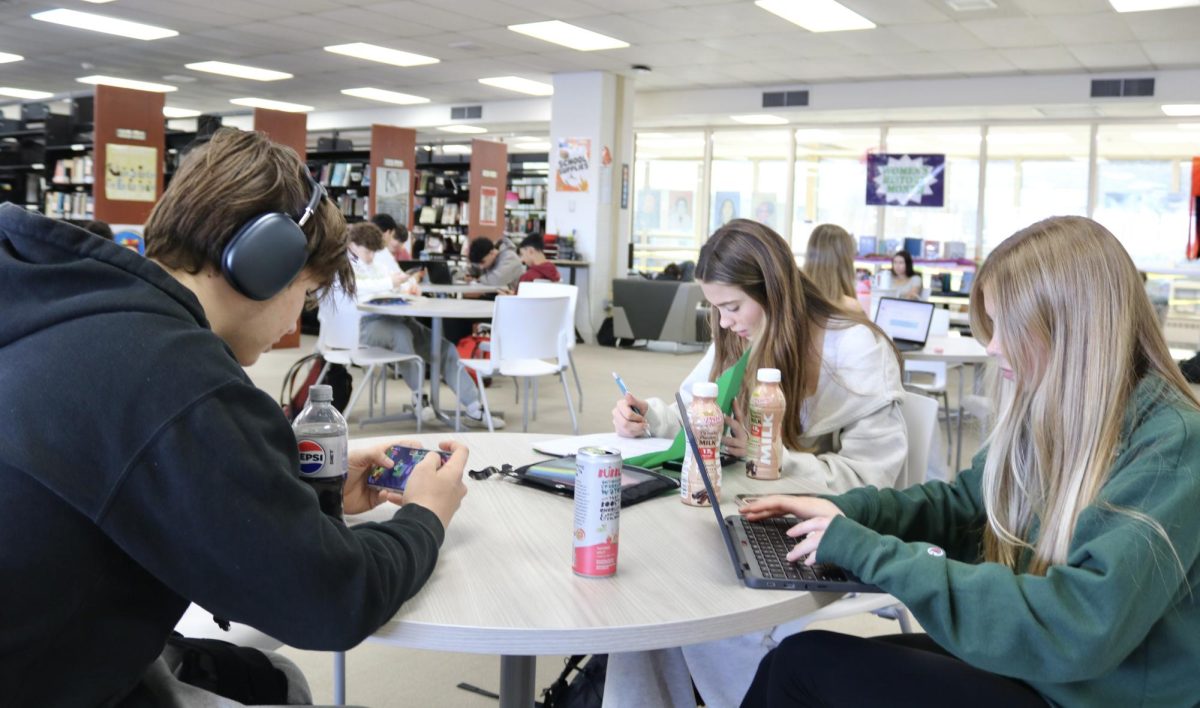
When it gets to a certain time of the day or even just second period, I’m sure we all watch the same things happen: people resting their heads on their desks, yawning or even sneaking their phones in their laps. It’s our everyday reality. And I’m sure that we’re all guilty of counting down the minutes until the period is over and can finally pack our bags and go home. As much as this lack of engagement in class and how we spend our time can be the fault of ourselves, but, in a way, the American education system also takes some of the blame. Often, teens these days are labeled as lazy or spoiled, but what if the overall issue of student engagement in learning is deeper?
Curiosity in the Classroom
Less than half of high school students say that they feel curious in school, according to a survey report by the Harris Poll for Discovery Education. Why is this the case? Often, curiosity starts with intrinsic motivation, where students find a want to learn more about a subject. But, with the current American education system right now, it leaves very little for exploration. Often, with the strict grading system and homework hours piling up, students are pushed to complete the work rather than understand. This never-ending cycle of students staying up late to finish homework to do well on a test or keep a certain letter grade pushes students further towards burnout, leaving students to question what school is actually doing for them and their future.
Students start out exploring numbers, shapes and drawing in the early elementary school years, so why does it have to be any different in the later middle school and high school years? Why can’t we still foster that same idea and sense of creativity and curiosity toward the life ahead of us? To get back to these ideas of fostering curiosity in learning, this can start with changes in the American education system.
This can start with project-based learning, such as creating a podcast on a significant war in history. Therefore, this allows for more creative freedom. Gaining this new sense of curiosity and creative freedom can only help students more in the future. In fact, 78% of students and 82% of teachers found creativity to be a skill most important in order to prepare for the future, according to the Harris Poll.
In addition, project-based learning instead of lecture-based learning, where students are forced to memorize chunks of information in a short time-span, promotes the idea of self-awareness and discovering their interests. Therefore, this fulfills the idea of critical thinking, which 86% of students and 92% of teachers feel is important to prepare for the future, the Harris Poll found. Being tied to a desk all day and forced to learn from a set of worksheets or what a teacher lectures provides no sense of critical thinking and how the content matters for the student individually.
Negative Impacts on Mental Health
With the current rigid American education system, there’s limited space for students to process emotions and everyday activities as they juggle grades, tests, projects and peer pressure to exceed in the school system. Not only can this be demotivating for a student’s wellbeing, but it can lead to academic performance issues, such as poor grades, even leading the student into a cycle that’s hard to get out of.
Specifically, 3.1 million people from the ages of 12-17 deal with periods of depression, according to Mental Health America, leading to symptoms like sadness, hopelessness and lack of concentration. So, how is there a connection between these negative mental health effects and student engagement? When the school system is all about earning the recognition of others or yourself for getting good grades, taking advanced classes or overcommitting in terms of extracurricular classes, this creates constant pressure, leading to these feelings of depression and anxiety that students can fall into. Therefore, the American education system creates a cycle of nonstop student engagement that can overlook student’s mental health.
So, what can be done to fix this mental health crisis and get students back to being engaged in classes that allow for continuous, curious learning? The first thing to start with is redefining success in a healthy way for students. Students need to celebrate personal growth and gain a sense of self-awareness for themselves.
This can be done by setting healthy, reasonable goals. Socially, success can be seen as building healthy, positive relationships with teachers, peers and adults around them. Academically, rather than focusing on grades and how many rigorous classes they’re taking, students can focus on mastering important skills in the future like time management and critical thinking, which can be gained as student engagement strategies increase.
Looking Into the Future of Education
From 5th grade to 8th grade, I was a part of the Summit Learning Program (now known as Gradient Learning). While a part of this program, I did project-based learning with emphasis on student curiosity rather than teachers lecturing. Within this project-based learning, I learned a variety of life skills like time management, critical thinking and organization. I also set SMART goals every single day to track my own individual progress and set my own schedule for how I wanted to tackle each assigned project. Therefore, I was less focused on my grades and more focused on expanding my knowledge and who I wanted to be.
As I switched to the traditional American education system, there was a huge jump for me not just academically, but emotionally as well. I was suddenly stressed over keeping my grades up and the level of rigor of the classes I was taking, impacting me mentally. Just like so many others, I was trapped in this cycle.
But this cycle – full of self, peer and societal pressure – doesn’t have to be this way. The United States hasn’t built the keys to success, but rather to burnout – and to anxiety.
Therefore, the United States has many things to rethink as we go into this new stage of the education system and the future. This starts with imagining students as our future leaders and incorporating more real-world learning, allowing for a sense of creativity. We can take examples of project-based learning, setting SMART goals and numerous education programs like Gradient Learning leading the way for the future of education.
The whole “one-size fits all” is outdated; each student has their own learning style, personality and schedule in terms of learning. The education system therefore needs to rethink forms of assessment, teaching and collaboration among students so each student has the opportunity to reach their full potential.
Additionally, students’ physical and mental health is one of the keys to academic success, so this needs to be put at the forefront – through greater check-ins between students and teachers and allowing for students to continuously revise and learn from mistakes without feeling a sense of guilt for how they’re preserved.
The education may be stuck in this never-ending cycle, but the students aren’t. Instead, we’re ready to redefine what education can mean here in the United States and across the globe – all starting with putting student engagement at the center of it all.







